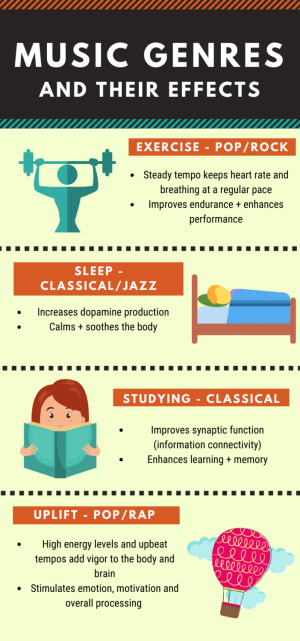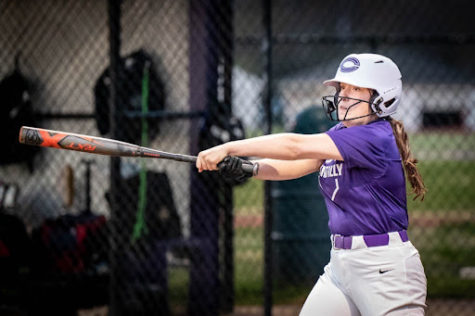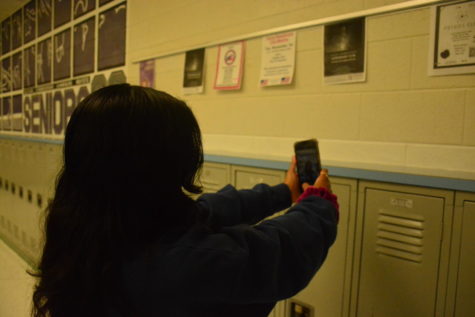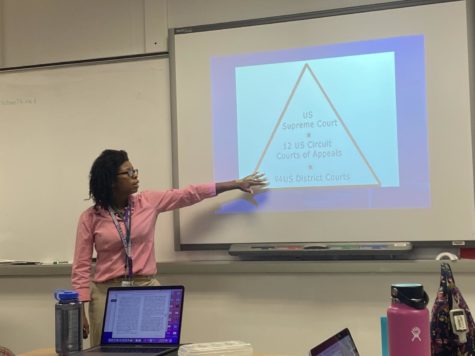Music data, Last.fm rise in popularity
Senior Harshini Bachu views her Last.fm report on a school laptop during Charger Time.
February 1, 2022
Opening Instagram at the end of November last year yielded a lot of one type of post: Spotify Wrapped. Many students shared Instagram stories with all their top songs, artists and genres of the year.
Spotify Wrapped provides users with a summary of their music data, but it isn’t the only option for students. Other services like Last.fm and Apple Music Replay also offer students the chance to view their listening trends at the tap of a finger.
“I started using Last.fm when one of my friends recommended it to me,” senior Yasmeen Elgayli said. “I listen to music a lot so I thought it would be interesting to have all of my data stored in one place.”
Last.fm is one of the most popular music data collection services offered, with millions of active users, according to the service itself. It allows users to connect their Spotify or Apple Music accounts to the application and track their listening. The service monitors music listening by converting each full listen of a song into what they call “scrobbles.” From there, it organizes user data and gives information on trends like top artists and songs, genre rankings and the number of new artists and albums one listens to.
“[Last.fm is appealing because] people like to quantify things,” senior Manya Phutela said. “Ranking and sorting music helps create connections, and applications like Last.fm make it easy to share your taste in music.”
Being able to easily access music trends and data also means that listeners can see how diverse their music taste is or how often they listen to the same songs. This can promote music exploration and encourage users to alter their listening habits. Last.fm also offers recommendations based on the types of artists a user listens to the most, often recommending more obscure artists or genres.
“Last.fm has definitely motivated me to listen to more genres,” Elgayli said. “Before I started using collection services, I had been listening to the same genres since middle school. Once I started sharing my data with others, I realized I should probably start branching out like my friends.”
Like Spotify Wrapped, the music data available on Last.fm has encouraged many users to share their charts and data with their friends and others on social media. Last.fm also has a following feature where anyone can see other users’ data.
“Comparing the number of minutes or albums is a way for music listening to get competitive, and it definitely has,” senior Harshini Bachu said. “On Last.fm there is a feature that tells you what percent of other users of the [service] you outrank based on listening.”
On social media especially, sharing music data has become a common practice among students and has brought some unintended consequences.
“Everyone wants to post their Spotify wrapped at the end of the year and the music you listen to has almost become a social status,” Elgayli said. “There are people who want to seem cool by listening to more underground artists, and then there are people who want to show off being super-fans of an artist and [being] in the [artist’s] top 5% [listeners].”
Healthy competition may be a fun way to increase music consumption and branch out, but as Last.fm provides data to users whenever they choose, an unintended result of this may be obsession.
“There are some negative effects of the [services] for me, personally, because sometimes when I have a busy week and I don’t listen to as much music, I feel disheartened when I look back at how much music I listened to that week,” Bachu said.
Other options for music data organization have been gaining popularity, such as websites that take data from user’s Spotify accounts like Obscurify and Receiptify.
“I think that Last.fm’s concept and popularity with Gen Z could give rise to a lot of other music services that also organize music data in interesting ways,” Bachu said. “This would be a really good thing for music lovers and could transform the way we look at listening.”













